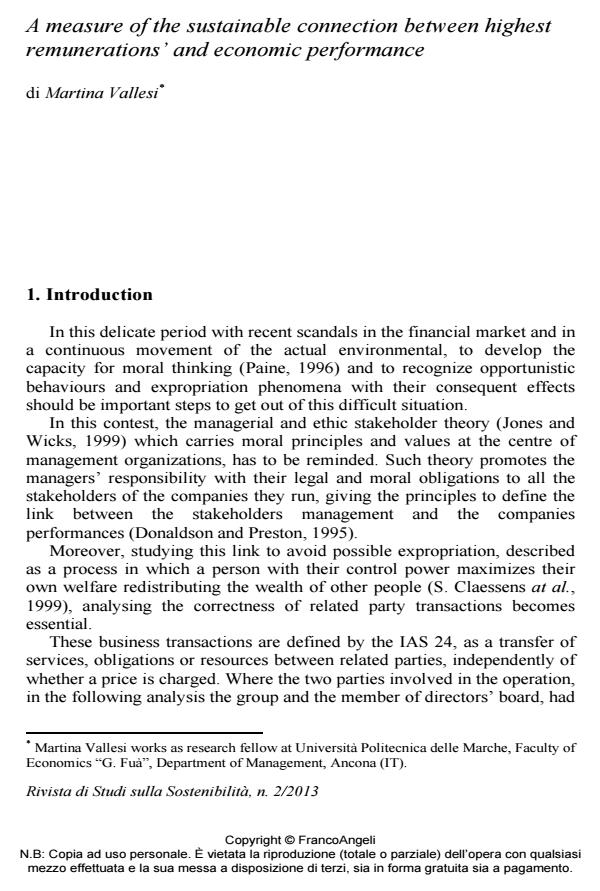A measure of the sustainable connection between highest remunerations’ and economic performance
Titolo Rivista RIVISTA DI STUDI SULLA SOSTENIBILITA'
Autori/Curatori Martina Vallesi
Anno di pubblicazione 2014 Fascicolo 2013/2
Lingua Inglese Numero pagine 15 P. 145-159 Dimensione file 947 KB
DOI 10.3280/RISS2013-002008
Il DOI è il codice a barre della proprietà intellettuale: per saperne di più
clicca qui
Qui sotto puoi vedere in anteprima la prima pagina di questo articolo.
Se questo articolo ti interessa, lo puoi acquistare (e scaricare in formato pdf) seguendo le facili indicazioni per acquistare il download credit. Acquista Download Credits per scaricare questo Articolo in formato PDF

FrancoAngeli è membro della Publishers International Linking Association, Inc (PILA)associazione indipendente e non profit per facilitare (attraverso i servizi tecnologici implementati da CrossRef.org) l’accesso degli studiosi ai contenuti digitali nelle pubblicazioni professionali e scientifiche
Focusing on the agency conflict between manager and shareholders and on the definitions of tunneling and propping, we delve into the related party transactions between a group and its management. Firstly, the paper examines actual and previous information to disclose for directors board remunerations (as for IAS, Consob and TUF). Such remunerations are based on a contract with legal and moral managers obligations to the companies of the group they run and to the stakeholder of such companies. For this reason, a balance between their remunerations and their performance is necessary to achieve preserving the interests of all the subjects involved in the companies’ activities and maintaining the continuity of the group. Then, using regressions, we measure, in a sample of listed companies, if there is a significant and sustainable connection between particular remunerations of the highest paid members of the directors board and the economic group performance.
Focalizzando l’attenzione sul conflitto di agenzia tra manager e shareholder nonché sulle definizioni di tunneling e propping, investighiamo sulle operazioni tra parti correlate di un gruppo e il suo management. All’inizio il paper esamina le informazioni attuali e passate da fornire per le remunerazioni del management (secondo IAS, Consob e TUF). Tali remunerazioni sono basate su dei contratti che stabiliscono obblighi legali e morali dei manager nei confronti delle società del gruppo dove essi operano, nonché degli stakeholder delle stesse società. Per questa ragione, è necessario raggiungere un equilibrio tra le remunerazioni dei manager e le loro performance per preservare gli interessi di tutti i soggetti coinvolti nell’attività delle società e per mantenere la continuità del gruppo. Infine, con l’utilizzo di alcune regressioni, misuriamo, in un campione di società quotate, l’esistenza di una relazione significativa e sostenibile tra particolari remunerazioni dei membri più pagati dei consigli di amministrazione e i risultati economici di gruppo.
Parole chiave:Teoria dell’agenzia, remunerazione membri del consiglio di amministrazione, parti correlate, operazioni tra parti correlate.
Martina Vallesi, A measure of the sustainable connection between highest remunerations’ and economic performance in "RIVISTA DI STUDI SULLA SOSTENIBILITA'" 2/2013, pp 145-159, DOI: 10.3280/RISS2013-002008